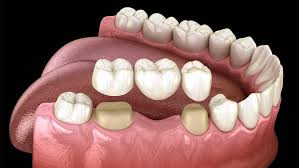The dental crown treatment procedure typically involves several steps, from initial assessment to the final placement of the crown. Here is a more detailed breakdown of the dental crown treatment procedure:
1. Initial Examination:
- Your dentist will examine your tooth and may take X-rays to assess the extent of damage, decay, or any other issues.
- Based on the examination, your dentist will determine if a dental crown is the appropriate treatment.
2. Treatment Planning:
- If a crown is recommended, your dentist will discuss the treatment plan with you.
- This includes discussing the type of crown material to be used, whether any additional procedures (such as root canal therapy or tooth buildup) are necessary, and the cost of the treatment.
3. Tooth Preparation:
- Before the crown can be placed, the tooth needs to be prepared. This involves removing any decay or damage and shaping the tooth to make room for the crown.
- In cases where the tooth is severely damaged, your dentist may need to build up the core of the tooth for added support.
4. Impressions:
- Once the tooth is prepared, your dentist will take impressions (molds) of the tooth and the surrounding teeth.
- These impressions serve as a model for the dental laboratory to create a custom crown that matches the shape and size of your natural tooth.
5. Temporary Crown:
- While waiting for the permanent crown to be fabricated (which may take a couple of weeks), your dentist will place a temporary crown to protect the prepared tooth.
- The temporary crown is usually made of a temporary material and is not as durable as the final crown.
6. Laboratory Fabrication:
- The impressions are sent to a dental laboratory where skilled technicians will create the permanent crown.
- The crown can be made of various materials, including porcelain, metal, or a combination of both, depending on your dentist’s recommendations and your preferences.
7. Final Placement:
- Once the permanent crown is ready, you will return to the dentist for its placement.
- The dentist will remove the temporary crown, check the fit and color of the permanent crown, and make any necessary adjustments.
- Once satisfied, the permanent crown is cemented or bonded into place.
8. Post-Treatment Care:
- Your dentist will provide instructions on caring for your new crown. This includes maintaining good oral hygiene through regular brushing and flossing.
- It’s essential to avoid chewing on hard or sticky foods immediately after getting a new crown to prevent damage.
9. Follow-up Appointments:
- Your dentist may schedule follow-up appointments to ensure the crown is functioning well and there are no issues.
It’s important to communicate with your dentist throughout the process, addressing any concerns or questions you may have. Additionally, following the dentist’s post-treatment care instructions will help ensure the longevity and success of the dental crown.





